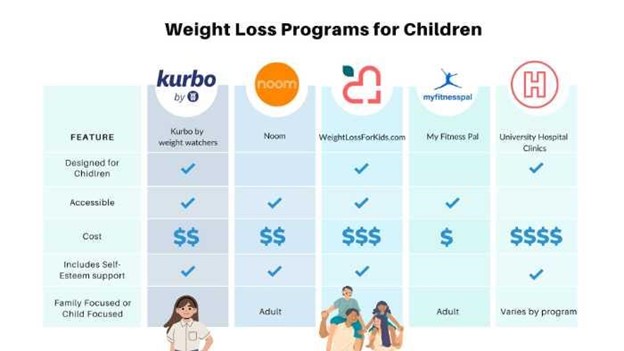All Categories
Featured
Table of Contents
-1
Leaders of army bases need to examine their centers to identify and get rid of problems that motivate several of the eating routines that advertise overweight. Some nonmilitary employers have raised healthy and balanced consuming options at worksite eating centers and vending devices. Although numerous publications recommend that worksite weight-loss programs are not extremely reliable in reducing body weight (Cohen et al., 1987; Forster et al., 1988; Frankle et al., 1986; Kneip et al., 1985; Loper and Barrows, 1985), this may not be the situation for the armed forces because of the better controls the military has over its "staff members" than do nonmilitary companies.
-1Nutrition experts can provide people with a base of details that allows them to make educated food options. Nourishment counseling and nutritional administration tend to concentrate more directly on the motivational, psychological, and mental concerns linked with the present job of weight loss and weight management.
-1Unless the program participant lives alone, nutrition management is seldom efficient without the participation of family participants. Weight-management programs may be divided right into two phases: weight management and weight upkeep. While workout may be the most vital component of a weight-maintenance program, it is clear that nutritional constraint is the vital component of a weight-loss program that influences the rate of weight-loss.
-1Hence, the power equilibrium equation may be impacted most significantly by decreasing power intake. gastric sleeve. The number of diet plans that have been proposed is virtually innumerable, but whatever the name, all diets include decreases of some percentages of protein, carbohydrate (CHO) and fat. The following areas examine a number of setups of the proportions of these 3 energy-containing macronutrients
Weight Management

-1
This kind of diet is composed of the kinds of foods an individual generally eats, however in lower quantities. There are a number of reasons such diets are appealing, yet the major reason is that the suggestion is simpleindividuals need only to adhere to the united state Division of Agriculture's Food pyramid.
-1In making use of the Pyramid, nonetheless, it is necessary to highlight the part sizes utilized to develop the suggested number of servings. A majority of customers do not recognize that a section of bread is a single piece or that a section of meat is just 3 oz. A diet based upon the Pyramid is easily adapted from the foods offered in group settings, consisting of army bases, given that all that is called for is to eat smaller sized sections.
-1A number of the research studies released in the medical literature are based on a balanced hypocaloric diet plan with a reduction of power intake by 500 to 1,000 kcal from the patient's common caloric intake. The United State Fda (FDA) advises such diets as the "conventional treatment" for medical tests of new weight-loss medications, to be utilized by both the active agent team and the placebo group (FDA, 1996).
-1The biggest quantity of weight reduction occurred early in the studies (about the very first 3 months of the plan) (Ditschuneit et al., 1999; Heber et al., 1994). One study found that ladies shed extra weight between the third and 6th months of the plan, but men shed a lot of their weight by the 3rd month (Heber et al., 1994).
Weight Loss ( Kalamunda 6057)
-1On the other hand, Bendixen and coworkers (2002) reported from Denmark that dish replacements were connected with adverse end results on weight-loss and weight maintenance. This was not a treatment study; participants were complied with for 6 years by phone interview and information were self-reported. Out of balance, hypocaloric diet plans restrict one or more of the calorie-containing macronutrients (protein, fat, and CHO).
-1A number of these diet plans are published in books targeted at the ordinary public and are often not written by health and wellness specialists and typically are not based upon sound clinical nourishment concepts. For a few of the dietary regimens of this type, there are few or no research publications and practically none have actually been researched long term.
Weight Loss Support
-1The significant kinds of unbalanced, hypocaloric diet plans are reviewed below. There has actually been significant debate on the optimum proportion of macronutrient consumption for grownups. This research study usually compares the amount of fat and CHO; nevertheless, there has been enhancing interest in the role of protein in the diet plan (Hu et al., 1999; Wolfe and Giovannetti, 1991).
-1The size of these studies that analyzed high-protein diets only lasted 1 year or less; the long-term security of these diet regimens is not recognized. Low-fat diets have actually been just one of one of the most typically utilized therapies for obesity for many years (Astrup, 1999; Astrup et al., 1997; Blundell, 2000; Castellanos and Rolls, 1997; Flatt, 1997; Kendall et al., 1991; Pritikin, 1982).
-1Outcomes of current research studies recommend that fat restriction is likewise valuable for weight maintenance in those that have shed weight (Flatt 1997; Miller and Lindeman, 1997). Dietary fat reduction can be achieved by counting and limiting the number of grams (or calories) eaten as fat, by limiting the consumption of specific foods (for instance, fattier cuts of meat), and by substituting reduced-fat or nonfat variations of foods for their higher fat counterparts (e.g., skim milk for entire milk, nonfat ice cream for full-fat gelato, baked potato chips for fried chips) (Dywer, 1995; Miller and Lindeman, 1997).
-1Several variables may add to this seeming contradiction. First, all people appear to selectively undervalue their intake of dietary fat and to lower typical fat intake when asked to tape it (Goris et al., 2000; Macdiarmid et al., 1998). If these results show the basic propensities of individuals completing nutritional studies, then the amount of fat being eaten by obese and, possibly, nonobese people, is above regularly reported.
Weight Loss Programs
-1They found that low-fat diets regularly demonstrated substantial fat burning, both in normal-weight and obese individuals. A dose-response relationship was likewise observed in that a 10 percent reduction in dietary fat was forecasted to generate a 4- to 5-kg fat burning in an individual with a BMI of 30. Kris-Etherton and colleagues (2002) found that a moderate-fat diet regimen (20 to 30 percent of power from fat) was more probable to promote weight-loss due to the fact that it was easier for individuals to abide by this type of diet plan than to one that was significantly restricted in fat (< 20 percent of energy).

-1
Very-low-calorie diet plans (VLCDs) were used thoroughly for weight loss in the 1970s and 1980s, yet have actually fallen under disfavor recently (Atkinson, 1989; Bray, 1992a; Fisler and Drenick, 1987). FDA and the National Institutes of Health and wellness define a VLCD as a diet plan that provides 800 kcal/day or less. optifast. Considering that this does not take into consideration body size, a much more clinical definition is a diet that gives 10 to 12 kcal/kg of "preferable" body weight/day (Atkinson, 1989)
-1The portions are consumed three to five times daily. The key goal of VLCDs is to create fairly fast weight reduction without considerable loss in lean body mass. To achieve this objective, VLCDs usually give 1.2 to 1.5 g of protein/kg of preferable body weight in the formula or as fish, lean meat, or chicken.
Latest Posts
Transparent Training Sessions Near Me
Specialist Group Training
Reliable Wellness Programs Near Me